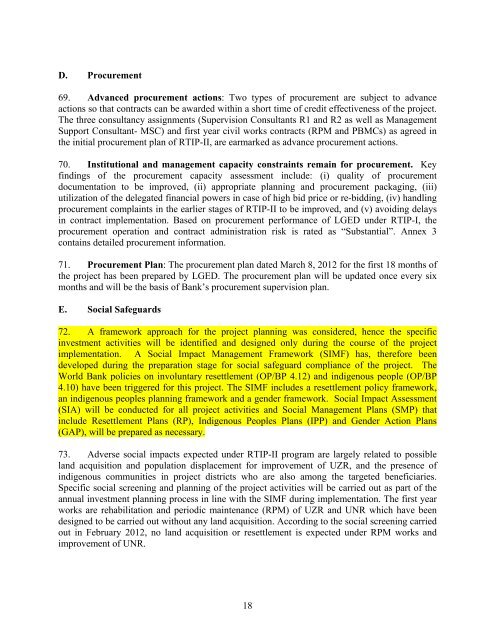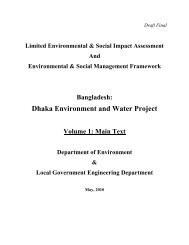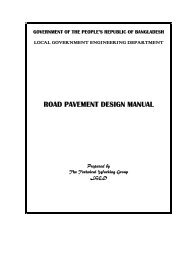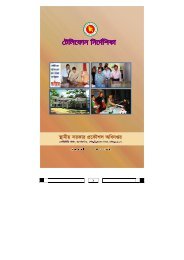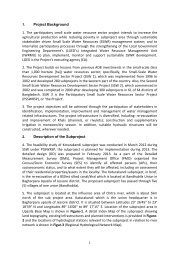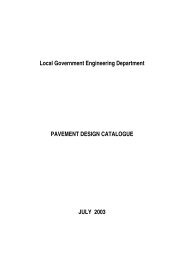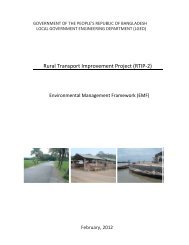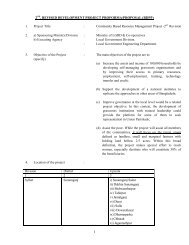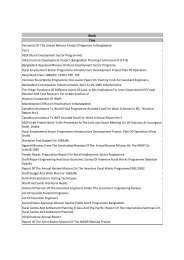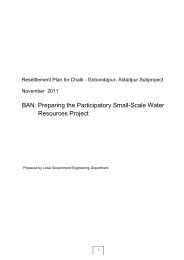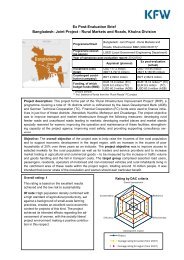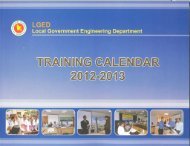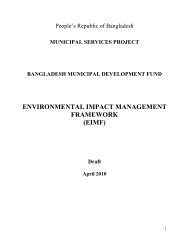PAD - LGED
PAD - LGED
PAD - LGED
Create successful ePaper yourself
Turn your PDF publications into a flip-book with our unique Google optimized e-Paper software.
D. Procurement<br />
69. Advanced procurement actions: Two types of procurement are subject to advance<br />
actions so that contracts can be awarded within a short time of credit effectiveness of the project.<br />
The three consultancy assignments (Supervision Consultants R1 and R2 as well as Management<br />
Support Consultant- MSC) and first year civil works contracts (RPM and PBMCs) as agreed in<br />
the initial procurement plan of RTIP-II, are earmarked as advance procurement actions.<br />
70. Institutional and management capacity constraints remain for procurement. Key<br />
findings of the procurement capacity assessment include: (i) quality of procurement<br />
documentation to be improved, (ii) appropriate planning and procurement packaging, (iii)<br />
utilization of the delegated financial powers in case of high bid price or re-bidding, (iv) handling<br />
procurement complaints in the earlier stages of RTIP-II to be improved, and (v) avoiding delays<br />
in contract implementation. Based on procurement performance of <strong>LGED</strong> under RTIP-I, the<br />
procurement operation and contract administration risk is rated as “Substantial”. Annex 3<br />
contains detailed procurement information.<br />
71. Procurement Plan: The procurement plan dated March 8, 2012 for the first 18 months of<br />
the project has been prepared by <strong>LGED</strong>. The procurement plan will be updated once every six<br />
months and will be the basis of Bank’s procurement supervision plan.<br />
E. Social Safeguards<br />
72. A framework approach for the project planning was considered, hence the specific<br />
investment activities will be identified and designed only during the course of the project<br />
implementation. A Social Impact Management Framework (SIMF) has, therefore been<br />
developed during the preparation stage for social safeguard compliance of the project. The<br />
World Bank policies on involuntary resettlement (OP/BP 4.12) and indigenous people (OP/BP<br />
4.10) have been triggered for this project. The SIMF includes a resettlement policy framework,<br />
an indigenous peoples planning framework and a gender framework. Social Impact Assessment<br />
(SIA) will be conducted for all project activities and Social Management Plans (SMP) that<br />
include Resettlement Plans (RP), Indigenous Peoples Plans (IPP) and Gender Action Plans<br />
(GAP), will be prepared as necessary.<br />
73. Adverse social impacts expected under RTIP-II program are largely related to possible<br />
land acquisition and population displacement for improvement of UZR, and the presence of<br />
indigenous communities in project districts who are also among the targeted beneficiaries.<br />
Specific social screening and planning of the project activities will be carried out as part of the<br />
annual investment planning process in line with the SIMF during implementation. The first year<br />
works are rehabilitation and periodic maintenance (RPM) of UZR and UNR which have been<br />
designed to be carried out without any land acquisition. According to the social screening carried<br />
out in February 2012, no land acquisition or resettlement is expected under RPM works and<br />
improvement of UNR.<br />
18


